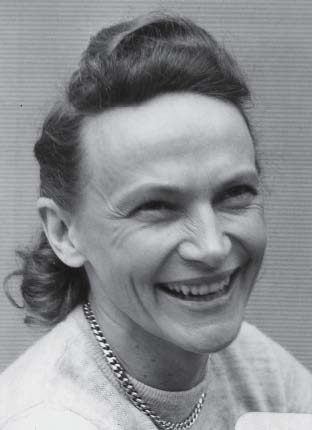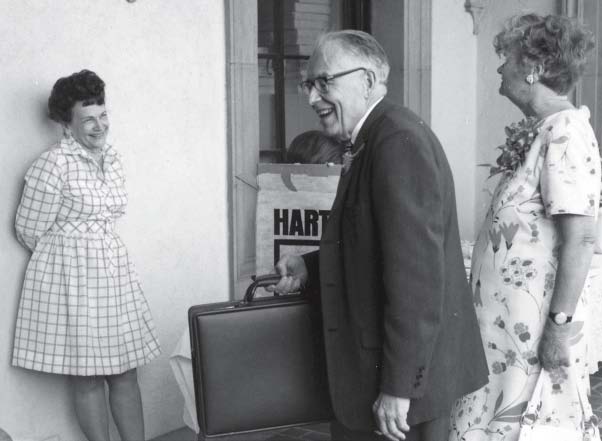| Publications: SRL: Unsung Heroines |
May/June 2006
Vi Taylor, 1913–

Vi Taylor, circa 1955.
In the early 1950s, Violet Taylor— known to all as Vi—began working at the Caltech Seismological Laboratory as an assistant to Charles Richter. According to Richter, Taylor, who had no previous training in science, had been “scared pink” when she took the job. Over the years, however, her responsibilities expanded enormously from the basic, routine measurements she was hired to carry out. She essentially ran the “measuring room,” where basic analysis of seismograms took place; her responsibilities expanded to include the training of Seismo Lab graduate students.
When Beno Gutenberg died of influenza in January 1960, Richter was in Japan on a Fulbright scholarship. He wrote Taylor that he could not afford to come back for a brief visit and did not think a permanent return was necessary, because “Beno’s passing away [did] not affect the status of [any work]” he had left behind. Richter then added, “…with the conspicuous exception that it throws you on your own for the interpretation of seismograms. It is well that you had these few months of schooling with him.” This and other correspondence suggests that Richter had every confidence in Taylor’s ability to run the record room and interpret seismograms.
In 1961 Richter wrote then-Seismo Lab Director Frank Press, arguing that Taylor deserved a salary increase. Richter informed Press that Taylor was capable of running the lab operation in his absence and suggested that a change in job title to “seismologist” would be appropriate.
As Richter later wrote, “the place was never run so well” as it was under Taylor. “[S]he knew how to handle the young men around the place—they didn’t get away with anything.” Even so, students from the 1960s and early 1970s credited Taylor with creating an enjoyable working environment at the lab. In addition to running the record room, she hosted a daily coffee break attended by one and all, during which good humor and repartee abounded. Former colleagues recall Taylor’s visceral dislike of snakes (many of which were to be found in the local San Rafael Hills), and her soft spot for the wild foxes that lived near the Kresge Lab.
Taylor never joined the Seismological Society of America or authored any scientific papers, yet those who passed through the Seismo Lab unanimously praise her for her contributions to analysis as well as training. When she first joined the lab, operations were housed at the original Kresge Lab several miles northwest of the main Caltech campus. By the time Taylor retired in the late 1970s, Richter also had retired and lab operations had moved to the central Caltech campus.

Vi Taylor, left, at retirement party for Charles Richter, center, with his wife, Lillian. (Photographs courtesy of Caltech Seismological Laboratory.)
Kate Hutton, lead staff seismologist at the Seismo Lab, arrived at Caltech after Taylor’s retirement, but once visited Taylor at home to learn how to read an intermittent Morse Code radio signal that, with some ingenuity, provided time corrections on seismograms that predated WWVB clocks. Hutton eventually computerized and relocated all of the local earthquakes recorded from 1932 to 1974. In the course of this work she came to recognize Taylor’s handwriting, and Hutton said she came to realize that the events that Taylor analyzed generally had the most reliable solutions. “She was somewhat of a role model,” Hutton said. Hutton said that she treasures a keepsake from that era: Taylor’s Keuffel and Esser ruler, “well rounded at the ends, since it has passed over most of the records in the historical archive.”
Born in 1913, Taylor retired from the Seismo Lab in the late 1970s and resides in Monrovia, California.
[Back]
Posted: 05 May 2006

